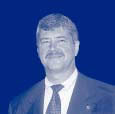 I am pleased to report that, for the eleventh consecutive year, the FDIC has received unqualified "clean" opinions from the U.S. General Accounting Office (GAO) on audits of its 2002 financial statements for the Bank Insurance Fund (BIF), Savings Association Insurance Fund (SAIF), and Federal Savings and Loan Insurance Corporation Resolution Fund (FRF). These clean opinions attest to the fact that our financial statements are fairly presented and demonstrate discipline and accountability in the execution of our responsibilities as stewards of these funds.
I am pleased to report that, for the eleventh consecutive year, the FDIC has received unqualified "clean" opinions from the U.S. General Accounting Office (GAO) on audits of its 2002 financial statements for the Bank Insurance Fund (BIF), Savings Association Insurance Fund (SAIF), and Federal Savings and Loan Insurance Corporation Resolution Fund (FRF). These clean opinions attest to the fact that our financial statements are fairly presented and demonstrate discipline and accountability in the execution of our responsibilities as stewards of these funds.
The Corporation’s investment strategy reflects prudent management of the
$32.1 billion BIF and $11.7 billion SAIF. It is noteworthy that the interest earned
on investment securities last year accounted for 94.2 percent of revenues for
the BIF and 95.8 percent of revenues for the SAIF, with $2.26 billion in combined
interest earned. Another noteworthy result in 2002 was the large accumulation
of unrealized gains on Available for Sale (AFS) securities, particularly in the BIF.
For 2002, the BIF accumulated unrealized gains of $566 million, and the SAIF
accumulated unrealized gains of $192 million. In part, the large balances of
unrealized gains helped to maintain the reserve ratios of the funds above the
Designated Reserve Ratio (DRR), which benefited the industry by avoiding
insurance assessment premium payments. These two factors combined – strong
earnings on the investment portfolio and unrealized gains – helped to boost the
BIF by $1.6 billion, the largest calendar year increase since 1995.
Several initiatives focused on reengineering business processes to improve cost
measurement and containment. The FDIC budget was restructured to reflect an
ongoing operations component, a receivership operations component, and an
investment component to help better manage expenses. As a result of aggressive
efforts to streamline corporate operations during 2002, the 2003 budget
includes estimated spending of $1.1 billion, which is seven percent lower than
2002 spending. The FDIC also established new and more rigorous procedures
for reviewing proposed capital investments. The centerpiece of this new
process is the Capital Investment Review Committee (CIRC), which will be
responsible for reviewing all major proposed information technology and other
investment initiatives before they are funded. The CIRC will carefully assess the
projected return on investment of each proposed project, and ensure that there is
a sound business case for each project.
The Corporation initiated work on two major investment projects during 2002:
- In March, the Board of Directors unanimously approved the expansion of our
Seidman Center office complex in Northern Virginia. The expanded facility will
house an additional 1,100 employees who are now working in leased space
in downtown Washington, DC. We expect to break ground for the expanded
facility in 2003, with completion scheduled for 2006. This expansion will
reduce future facility costs by an estimated $78 million (net present value)
over the next 20 years.
- During the fourth quarter, we began development of an integrated financial
system, scheduled to be implemented in July 2004. This "New Financial
Environment" will improve business processes by adopting the best business
practices built into software packages, simplify and consolidate financial
systems and data, and enhance the Corporation's ability to address its future
financial management and information needs. It will also substantially reduce
the costs of financial management and reporting.
The FDIC continues to focus on information technology challenges. During 2002,
we conducted a self assessment, with an emphasis on information security, to
evaluate our progress in addressing prior audit findings. The FDIC information
security program will continue to be strengthened in 2003 to ensure that key
management tools are in place to support the Corporation’s mission and strategic
goals.
The FDIC has evaluated its risk management and internal control systems in
accordance with the reporting requirements of the Federal Managers’ Financial
Integrity Act of 1982 (FMFIA) and GAO internal control standards. Based on
these assessments, I can provide you with reasonable assurance that the
Corporation’s risk management and internal control systems, taken as a
whole, are in conformance with the standards prescribed by GAO and that
the objectives of FMFIA have been achieved.
Finally, this year’s Annual Report has been redesigned to help streamline our
reporting process by combining the Chief Financial Officers Act Report, the
Program Performance Report, and the traditional Annual Report. The performance
results contained in this combined report summarize our success in achieving
the goals we established for 2002. Our priority is to provide timely, reliable and
useful data to our stakeholders. To that end, the FDIC will continue to employ
sound financial management techniques and emphasize the importance of
a strong risk management and internal control program to meet its statutory,
regulatory and fiduciary responsibilities.
Sincerely,

Steven O. App